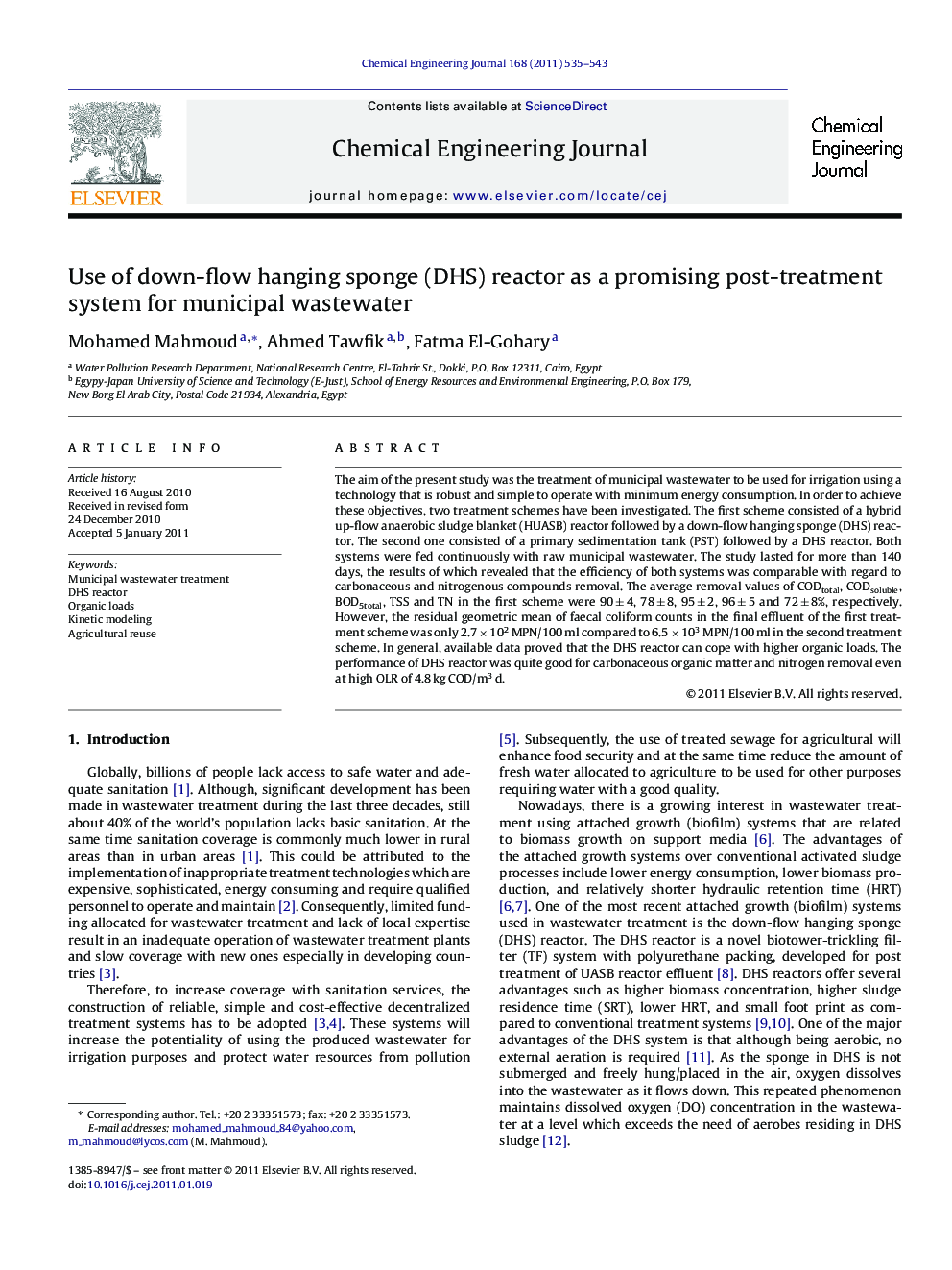| Article ID | Journal | Published Year | Pages | File Type |
|---|---|---|---|---|
| 151341 | Chemical Engineering Journal | 2011 | 9 Pages |
The aim of the present study was the treatment of municipal wastewater to be used for irrigation using a technology that is robust and simple to operate with minimum energy consumption. In order to achieve these objectives, two treatment schemes have been investigated. The first scheme consisted of a hybrid up-flow anaerobic sludge blanket (HUASB) reactor followed by a down-flow hanging sponge (DHS) reactor. The second one consisted of a primary sedimentation tank (PST) followed by a DHS reactor. Both systems were fed continuously with raw municipal wastewater. The study lasted for more than 140 days, the results of which revealed that the efficiency of both systems was comparable with regard to carbonaceous and nitrogenous compounds removal. The average removal values of CODtotal, CODsoluble, BOD5total, TSS and TN in the first scheme were 90 ± 4, 78 ± 8, 95 ± 2, 96 ± 5 and 72 ± 8%, respectively. However, the residual geometric mean of faecal coliform counts in the final effluent of the first treatment scheme was only 2.7 × 102 MPN/100 ml compared to 6.5 × 103 MPN/100 ml in the second treatment scheme. In general, available data proved that the DHS reactor can cope with higher organic loads. The performance of DHS reactor was quite good for carbonaceous organic matter and nitrogen removal even at high OLR of 4.8 kg COD/m3 d.
